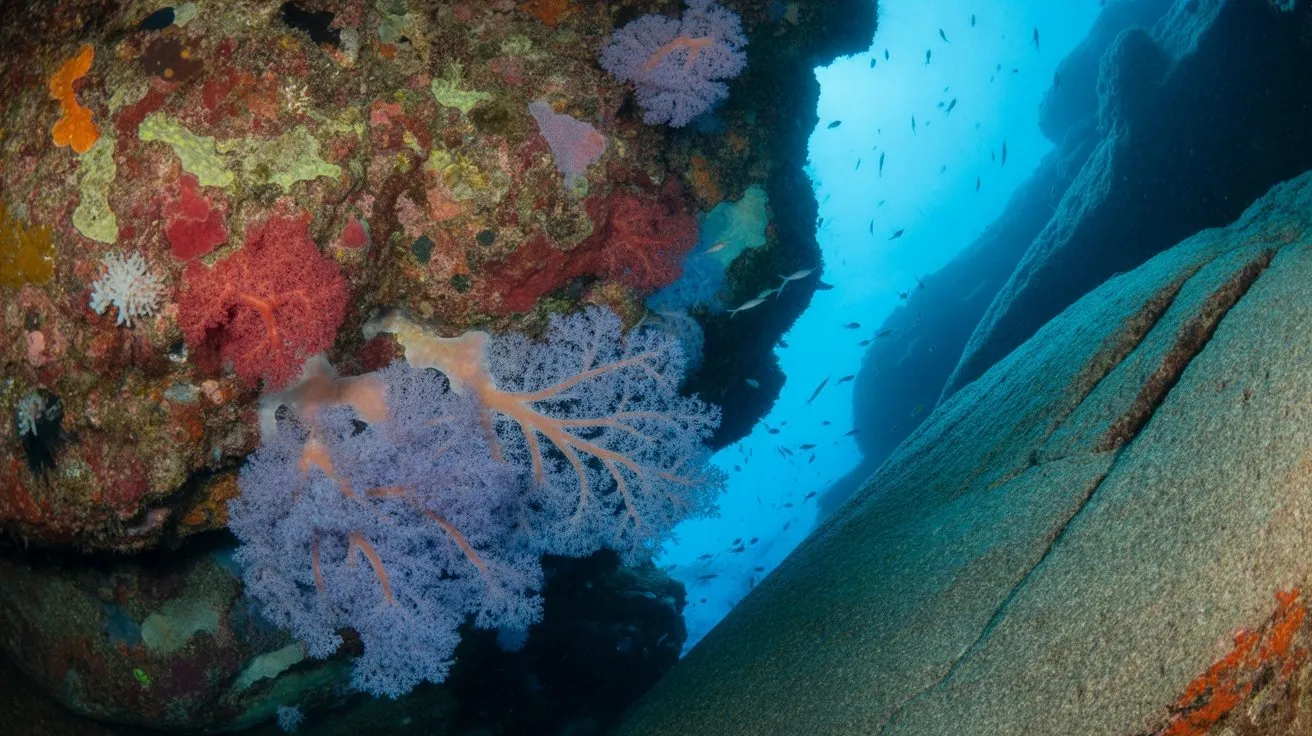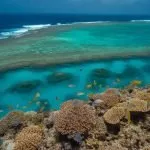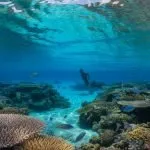When you’re examining marine specimens, you’ll encounter formations that challenge your identification skills. Distinguishing between coral structures and mineral rock formations requires systematic observation of specific morphological indicators. You’ll need to assess porosity patterns, calcium carbonate composition, and biological signatures that separate living or fossilized coral colonies from inorganic geological samples. The diagnostic process involves multiple analytical approaches, as visual similarities can deceive even experienced marine biologists when key identification markers remain hidden.
Visual Characteristics That Set Corals Apart From Rocks
When examining underwater formations, you’ll notice that corals exhibit distinct visual characteristics that differentiate them from inorganic rock structures.
Live corals display vibrant pigmentation ranging from fluorescent greens to deep purples, created by symbiotic zooxanthellae algae. You’ll observe intricate skeletal patterns with visible polyps extending from calcium carbonate frameworks.
Coral surfaces show organized, repetitive structures like ridges, valleys, and branching formations that follow biological growth patterns. Rock formations lack this biological complexity, presenting uniform mineral compositions with angular fractures and weathering patterns.
Coral colonies demonstrate radial symmetry and geometric precision, while rocks exhibit random crystalline structures or sedimentary layering.
Living coral tissues appear translucent with visible internal structures, contrasting sharply with opaque mineral surfaces. Additionally, coral reefs are vital ecosystems that serve as critical habitats for numerous marine species, highlighting their importance in biodiversity.
Texture and Surface Features to Examine
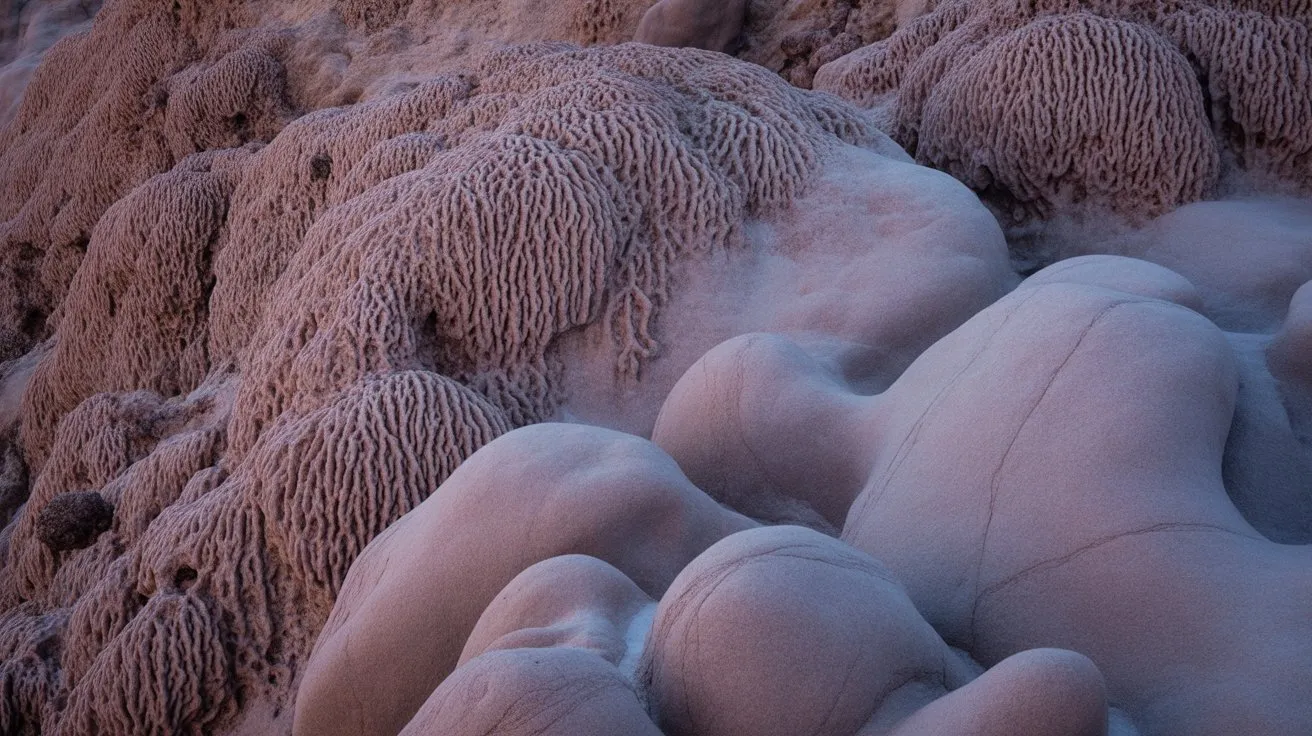
How can you distinguish between coral and rock through tactile examination? Texture analysis provides critical diagnostic information when visual assessment proves insufficient.
You’ll need to systematically examine surface characteristics using controlled pressure and methodical techniques.
Key textural features to evaluate:
- Surface roughness – Living coral exhibits fine, granular textures with microscopic polyp openings, while rocks display smoother or crystalline surfaces.
- Porosity patterns – Coral skeletons contain organized porous structures from calcium carbonate deposition, contrasting with random rock formations.
- Hardness response – Apply gentle pressure; coral feels brittle and chalky, whereas most rocks demonstrate greater density and hardness.
- Temperature differential – Coral retains cooler temperatures due to internal water channels, while solid rock warms quickly. Healthy coral reefs also play a crucial role in biodiversity support by serving as habitats for numerous marine species.
Document your observations systematically for accurate identification.
Weight and Density Differences
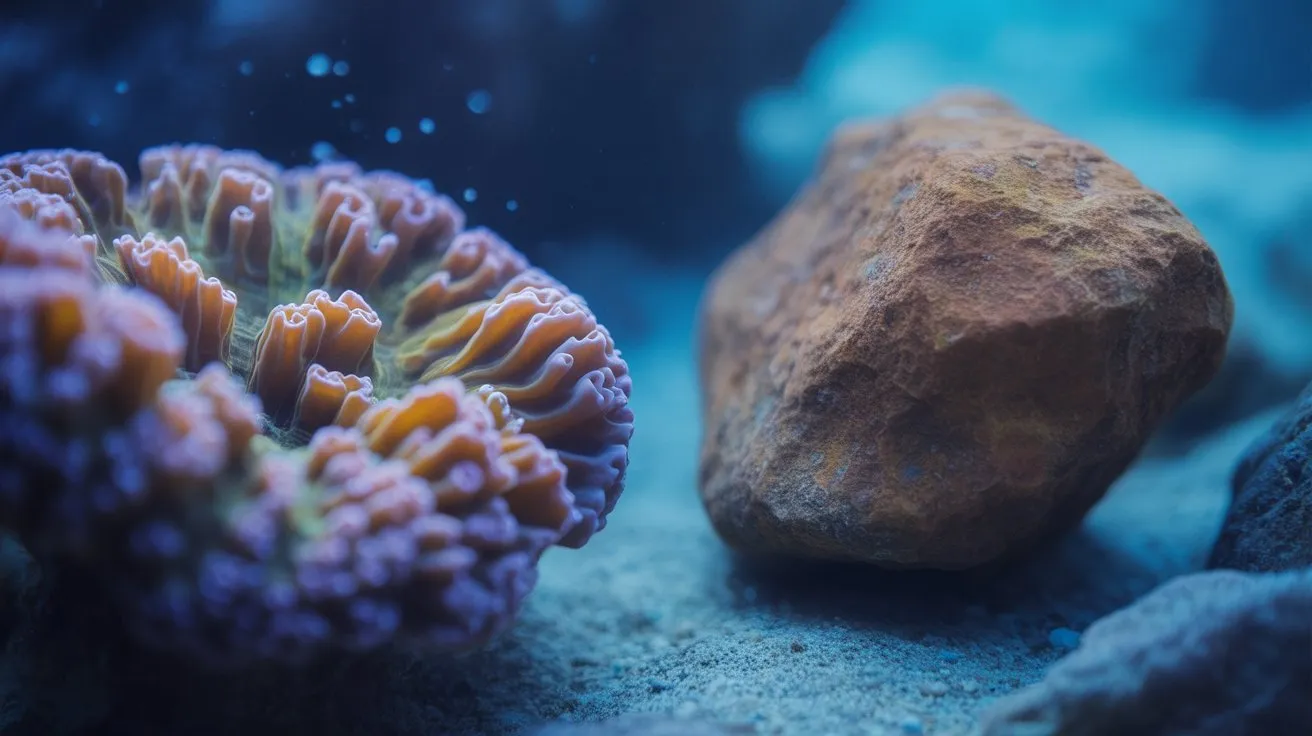
Since coral structures contain numerous internal cavities and water channels, they exhibit markedly lower density compared to solid rock formations of equivalent size. You’ll notice this difference immediately when lifting specimens. Coral skeletons typically weigh 30-50% less than similarly sized rocks due to their porous calcium carbonate architecture. Test density by comparing weight-to-volume ratios. Pick up your specimen and assess its heft relative to its dimensions. Coral feels surprisingly light, almost hollow, while rocks feel substantially heavier and more solid. You can perform a simple water displacement test: coral specimens will often float initially due to trapped air in their chambers, whereas rocks sink immediately. This density disparity stems from coral’s biological origin as living organisms that required internal space for tissues and circulation systems. Additionally, the complex structures formed by coral polyps play a significant role in their lightweight nature.
Color Patterns and Pigmentation Clues
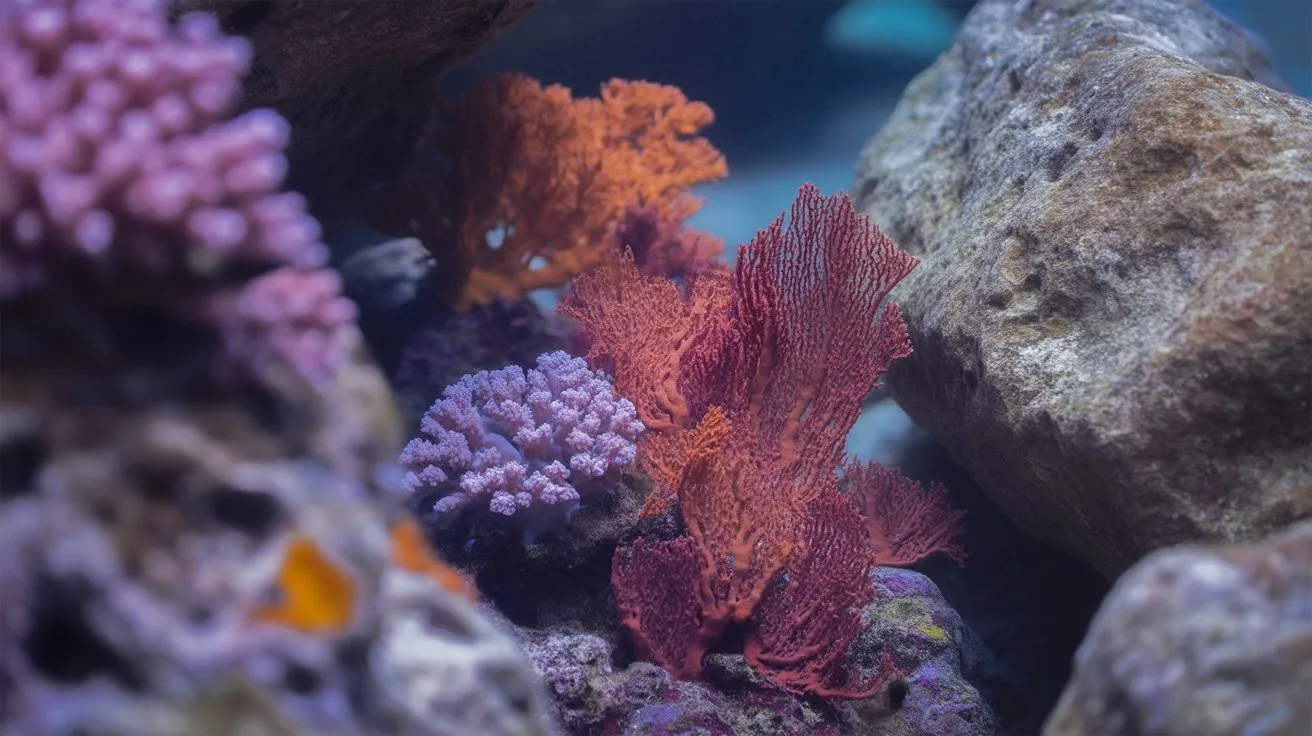
Beyond physical characteristics, coloration provides definitive identification markers that distinguish coral from rock formations.
You’ll observe distinct pigmentation patterns that reflect biological versus geological origins.
Live corals exhibit vibrant colors through symbiotic zooxanthellae algae, producing yellows, greens, browns, and purples. Dead coral skeletons appear white or bleached. Rocks display earth tones—grays, browns, blacks—determined by mineral composition.
Key identification markers include:
- Fluorescent properties – Corals often fluoresce under UV light, while rocks remain dull.
- Color uniformity – Coral polyps create consistent patterns; rocks show random mineral streaking.
- Brightness variation – Living corals display saturated hues; rocks exhibit muted tones.
- Surface consistency – Coral coloration follows biological growth patterns; rock pigmentation reflects sedimentary layering.
Additionally, the vibrant colors of live corals are essential in attracting marine life and play a crucial role in the reef’s ecosystem, as they are linked to oxygen production through their symbiotic relationship with algae.
You’ll develop reliable identification skills by systematically analyzing these chromatic characteristics.
Structural Formations and Growth Patterns
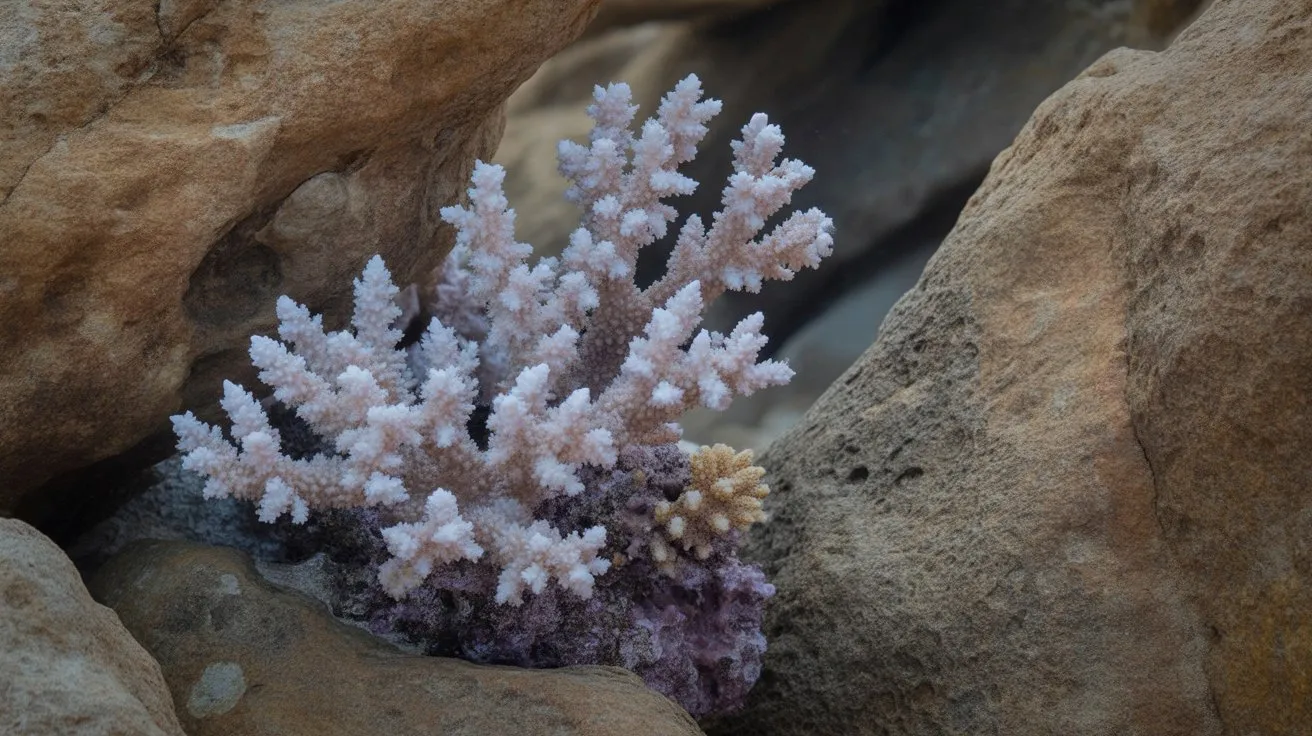
While color patterns provide initial identification clues, structural formations reveal the fundamental differences between coral and rock through distinct growth mechanisms. You’ll observe that corals exhibit organized, repetitive patterns reflecting biological construction processes, whereas rocks display irregular formations based on geological forces.
Examine growth directionality carefully. Corals demonstrate radial or branching growth patterns with consistent polyp arrangements, while rocks show random fracturing and weathering patterns. You’ll notice coral structures maintain uniform skeletal density and organized calcium carbonate deposition. Additionally, the health of coral reefs is critical for sustaining biodiversity, which is evident in their complex predator-prey dynamics.
| Feature | Living Coral | Dead Coral | Rock |
|---|---|---|---|
| Growth Pattern | Radial/branching | Radial remnants | Random/fractured |
| Surface Texture | Smooth polyp cups | Eroded cups | Irregular surfaces |
| Structural Density | Uniform porosity | Variable porosity | Dense/compact |
| Formation Lines | Concentric bands | Visible bands | Stratified layers |
These structural characteristics provide definitive identification markers for field assessment.
Testing Methods for Positive Identification
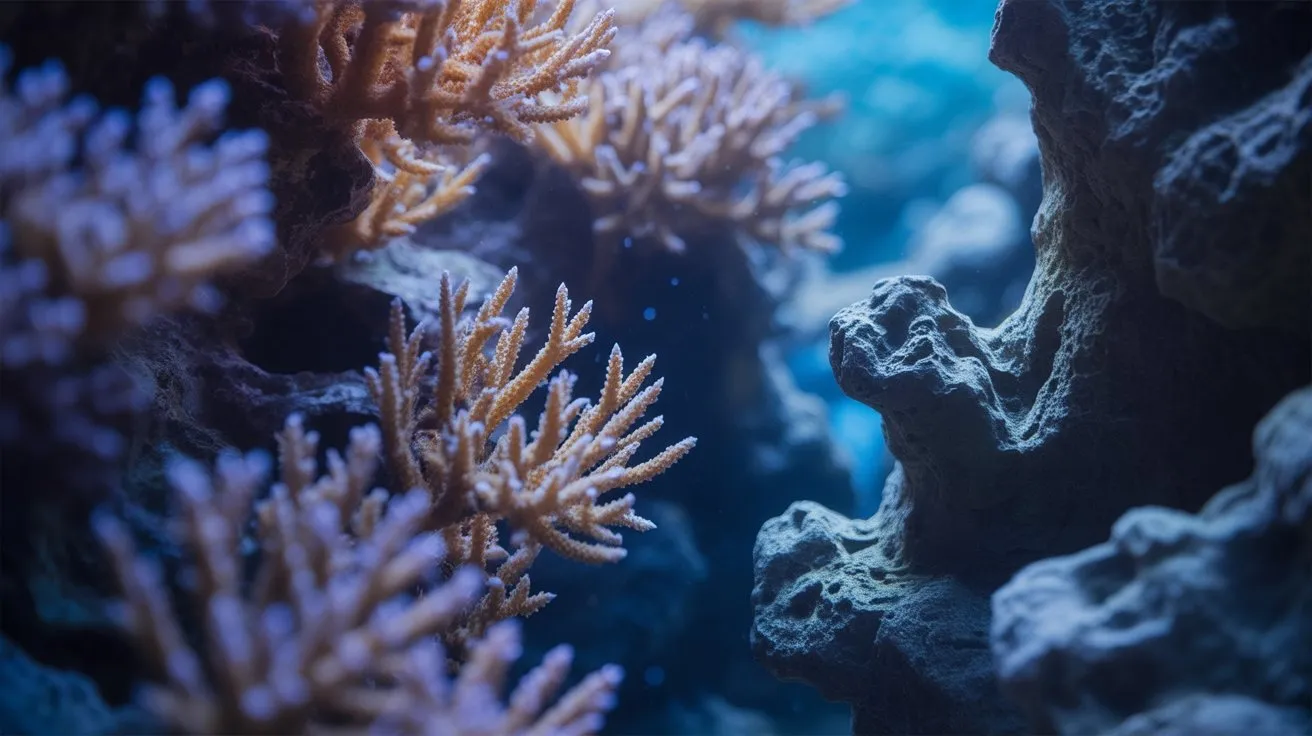
Although visual inspection provides valuable preliminary data, definitive identification requires systematic testing protocols that distinguish coral from rock through measurable characteristics.
You’ll need specialized equipment to conduct these analytical procedures accurately.
Implement these four critical testing methods:
- Acid reactivity test – Apply dilute hydrochloric acid to determine calcium carbonate presence through effervescence patterns.
- Hardness measurement – Use Mohs scale testing to assess mineral composition differences between coral aragonite and typical rock minerals.
- Microscopic analysis – Examine thin sections under polarized light to identify skeletal microstructures and crystalline arrangements.
- Density determination – Calculate specific gravity through water displacement methods to differentiate porous coral from dense rock matrices.
These quantitative approaches provide conclusive evidence for proper specimen classification. Additionally, understanding coral’s role in marine biodiversity is essential for recognizing its ecological importance.
Common Coral Types and Their Rock Look-Alikes
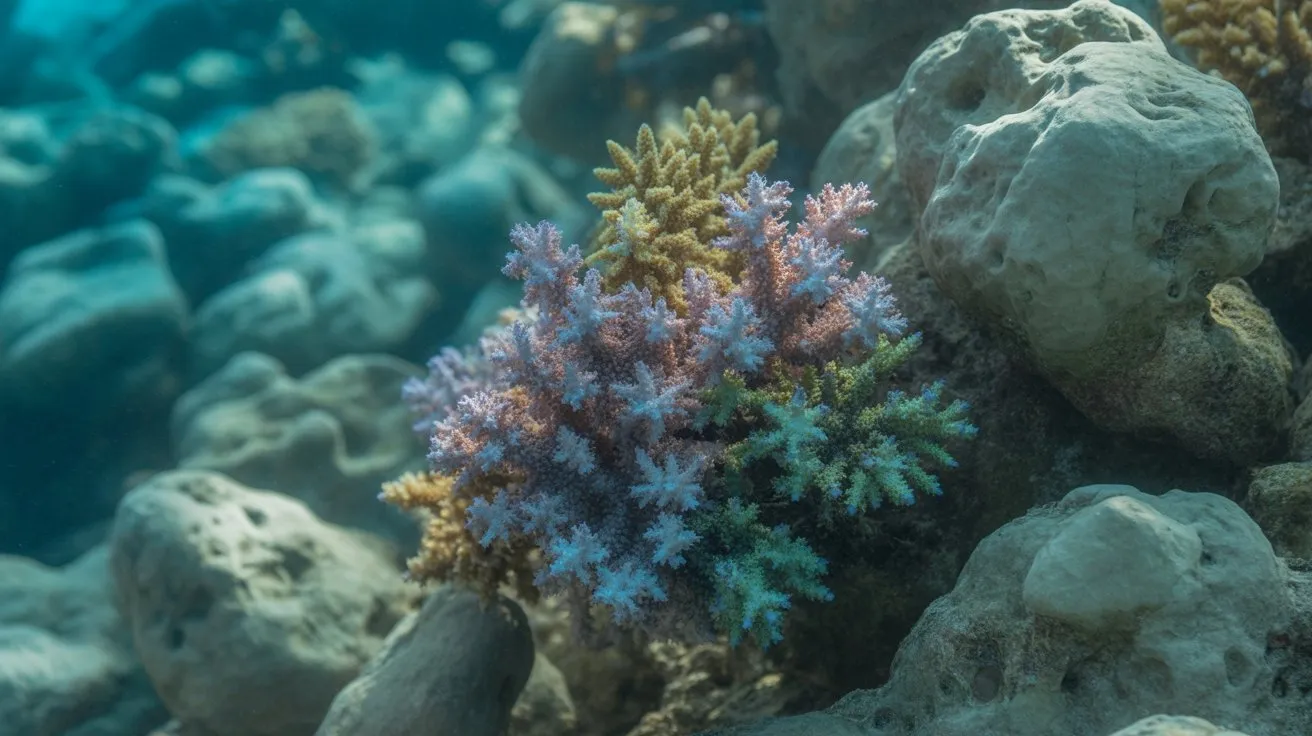
After establishing proper identification protocols, you’ll encounter specific coral species that frequently cause confusion with similar-looking geological formations. Brain corals often resemble weathered limestone with their convoluted surface patterns, while staghorn corals mimic crystalline rock formations. Plate corals can appear identical to sedimentary rock layers. Coral reefs are vital for marine ecosystem health, providing habitat and resources for diverse marine life.
| Coral Type | Rock Look-Alike | Key Distinguishing Feature |
|---|---|---|
| Brain Coral | Weathered Limestone | Organic tissue in grooves |
| Staghorn Coral | Quartz Crystals | Calcium carbonate composition |
| Plate Coral | Shale Layers | Radial growth patterns |
You’ll need to examine surface texture minutely. Living corals display polyp structures under magnification, whereas rocks show mineral crystallization patterns. Dead coral skeletons retain organized biological architecture, contrasting with rocks’ random geological processes. Temperature differentials and pH testing provide additional verification methods when visual inspection proves inconclusive.
Conclusion
You’ll discover that distinguishing corals from rocks coincidentally requires the same methodical approach marine biologists employ in taxonomic classification. As you’ve systematically examined chromatic variations, analyzed porosity coefficients, and assessed structural morphology, you’re simultaneously developing expertise in carbonate geology. It’s no coincidence that mastering these identification protocols enhances your understanding of both biogenic and abiotic marine formations. Your observational skills now parallel those used in professional substrate analysis and benthic habitat assessment.
